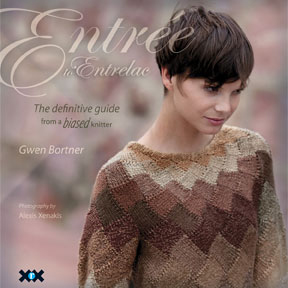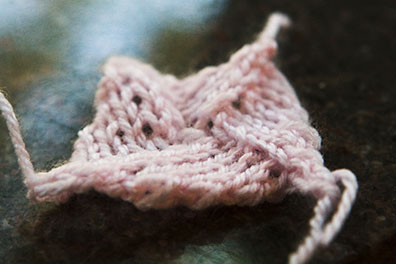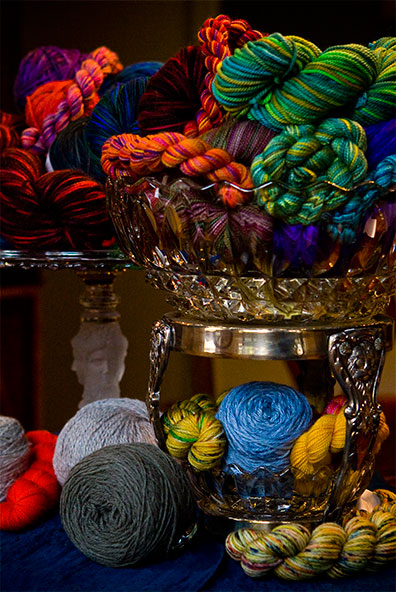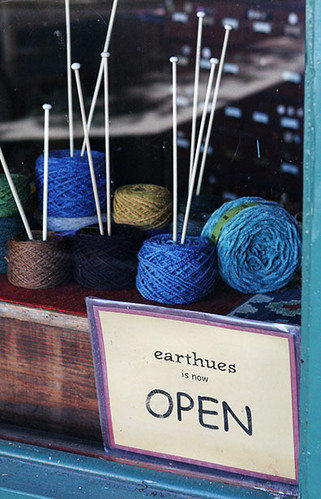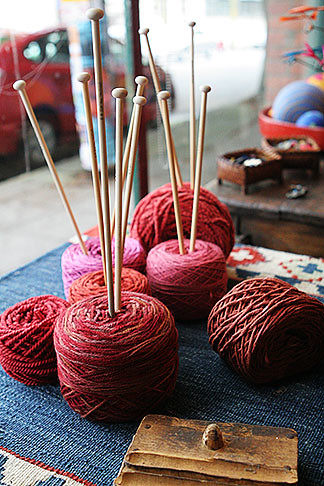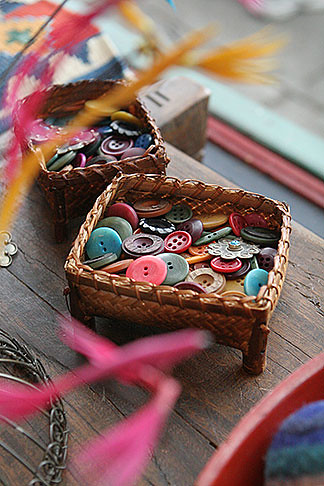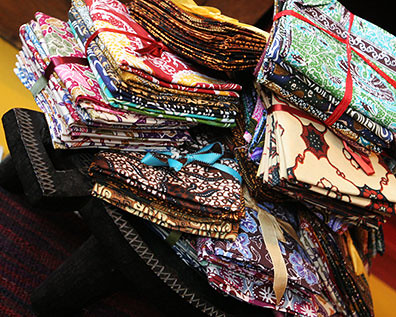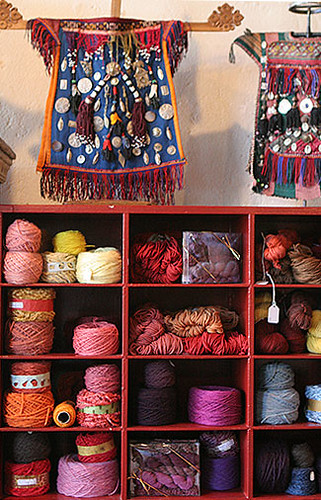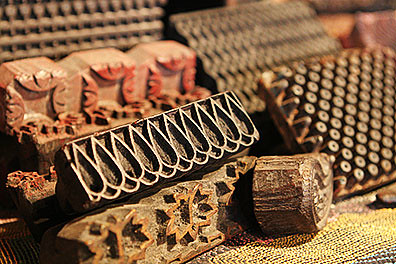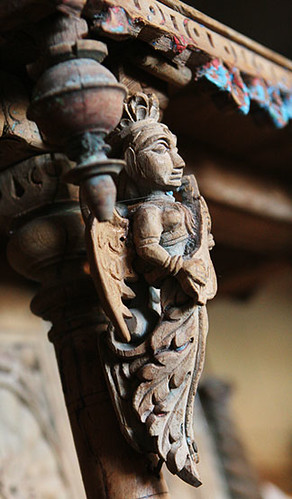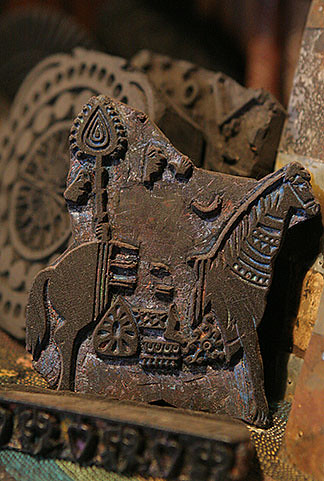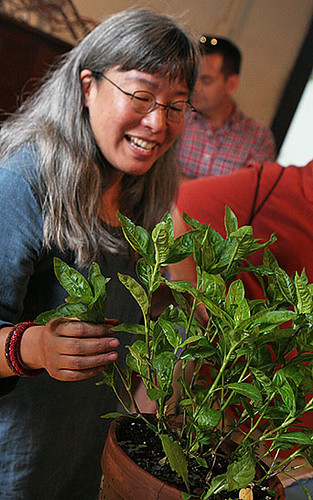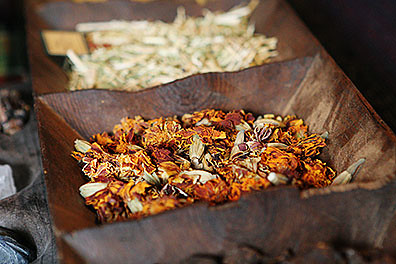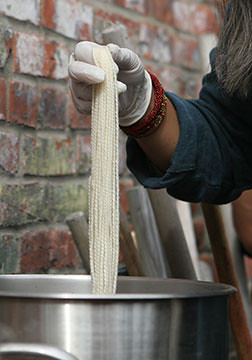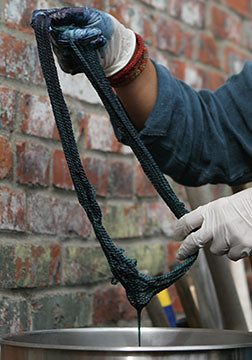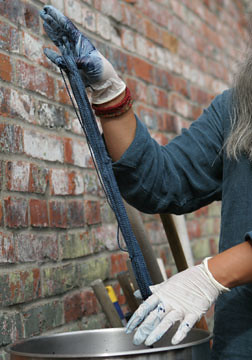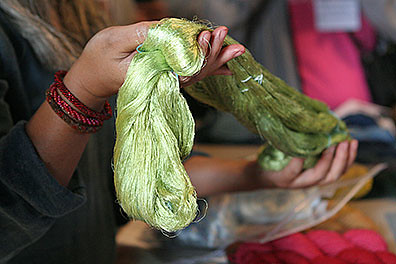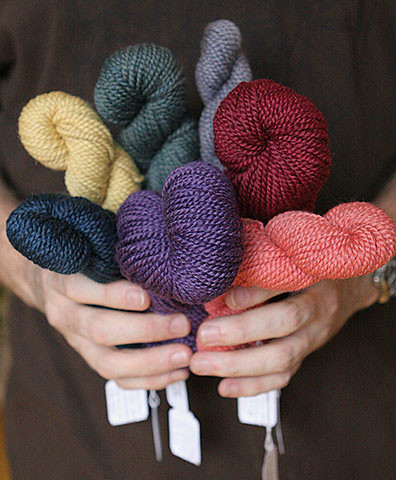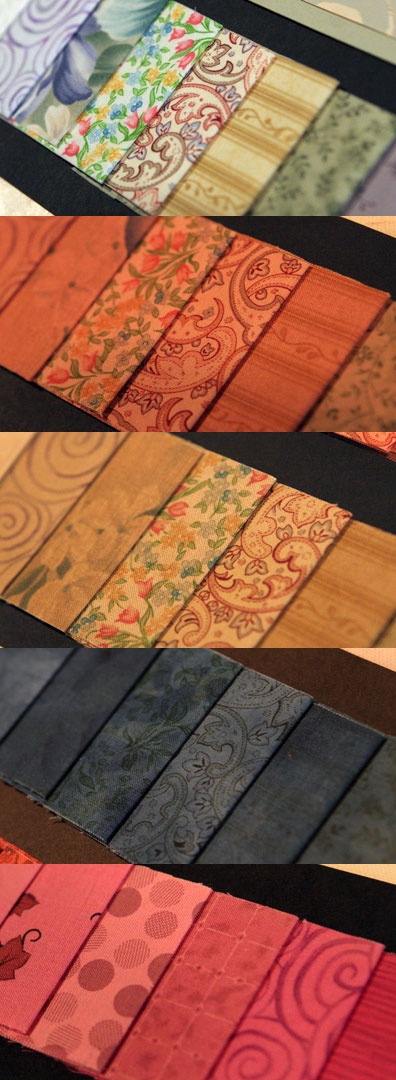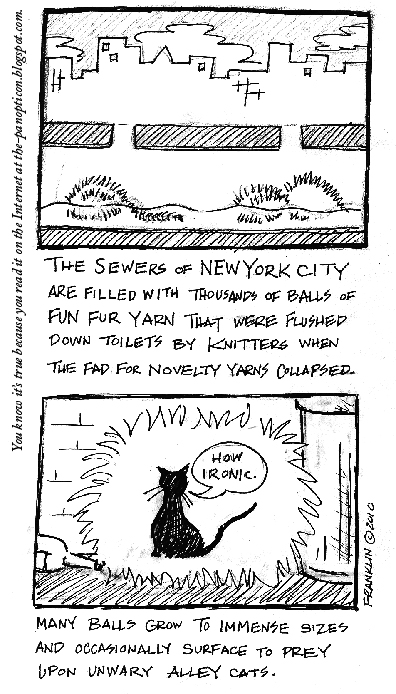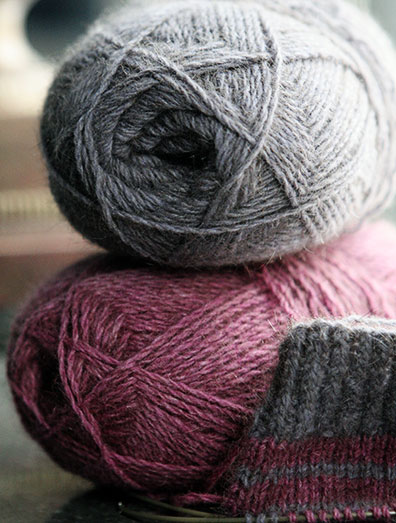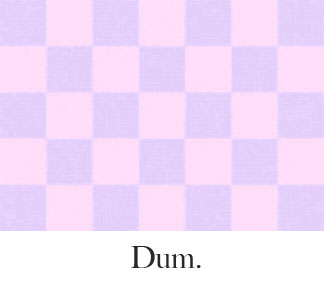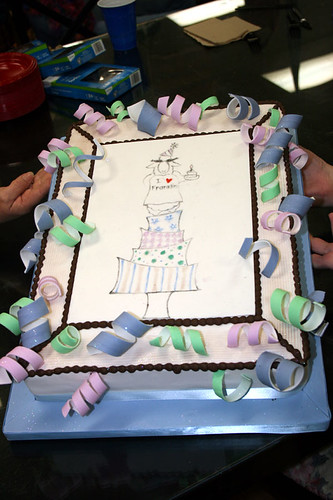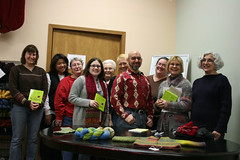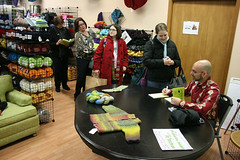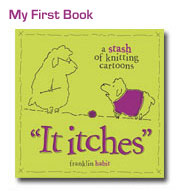
Look at that collar. Gorgeous, and perfectly practical for a pencil-neck like me who is prone to agonies of stiffness if I get even a whisper of draught down my back. I saw it, I want it, I'm going to make it.
Mind you, I'm going to change it. It's too long, for starters. As written,* it would hang to halfway down my thigh. Not pretty. I'm adding shaping in the torso, too–a taper from chest to waist.
It'll be gentle taper, because a sweater like this is meant to be a smidge loose. You put it on at home, in your study, when you've finally taken off your jacket and loosened your tie. It's not for the office. It's for quiet solitude. However, should somebody drop in on my solitude, I'd rather not have it hang on me like I'm wearing daddy's old bathrobe.
So, the Product Knitter within wanted to knit the sweater in order to wear the sweater. The Process Knitter within–which is dominant–wanted to try out the pockets.
Here's a shot of one pocket.

As you can see, not much else happening for acres and acres of stockinette but that pocket. Marvelously smooth opening, no?
You make it by knitting to the point at which you want your pocket opening to lie. Then–without breaking the working yarn–you work only on the stitches that will form the interior of the pocket, knitting and purling back and forth on them until you have a strip that's twice the intended depth of the pocket.
Then you line up the live stitches of this strip with the live stitches you left sitting on your needle and–again, without breaking the working yarn–resume knitting across all your stitches. The strip, now folded in half, forms the interior of the pocket. It's very neat, and just requires seams up the sides when the piece is finished.
Here it is in hasty scribble form.

And here's what the actual pocket (finished except for side seams) looks like from the wrong side.

I like it. The opening is, of course, seamless. The method is straightforward. You must plan for your pockets in advance, of course–so the devil-may-care atttiude I enjoy when putting in afterthought pockets is replaced by the smug satisfaction of knowing that part of the work is done, and I can just motor on toward the front-and-back shaping.
The yarn is proving to be a perfect choice–LB Collection Organic Wool. It's soft (without being so namby-pamby that it'll start to pill before the sweater is complete), it's springy, it's cuddly as a puppy wrapped in polar fleece, and the rustic texture is a welcome accent for a piece that's otherwise so plain.
Really, really curious about the collar, since to be blunt I haven't the faintest idea of how it's going to work after reading the pattern fifty times. Sometimes you just have to buckle on the parachute and jump.
How I Got This Way
Speaking of Lion Brand, the most recent essay I wrote for them–"Inheritance"–talks about creativity running in families–though often your creative family tree will include folks who aren't necessarily blood relations. I enjoyed writing (and drawing) this one...and my mother left a comment. That was a good day.
Turning Weaving Into Knitting
Quick update on the bag that card weaver John Mullarkey and I are collaborating on, using HiKoo CoBaSi. John sent along four band designs to choose from. He'll use the band as the basis for the strap.

I settled on the second from the top. What he wove, I'm going to try to interpret (not necessarily copy) in knitting for the body of the bag. Joy of joys, it's swatch time! I'm thinking mosaic might be the way to go, for the highly scientific reason that I've never tried it and it looks interesting. But first, we chart.
More to come.
*If you want it, the pattern is in the facsimile edition of the 1916 Lion Yarn Book that is available here. Facsimile means it's an unaltered copy of the original–so you'd be working from the period pattern, just as I am.










